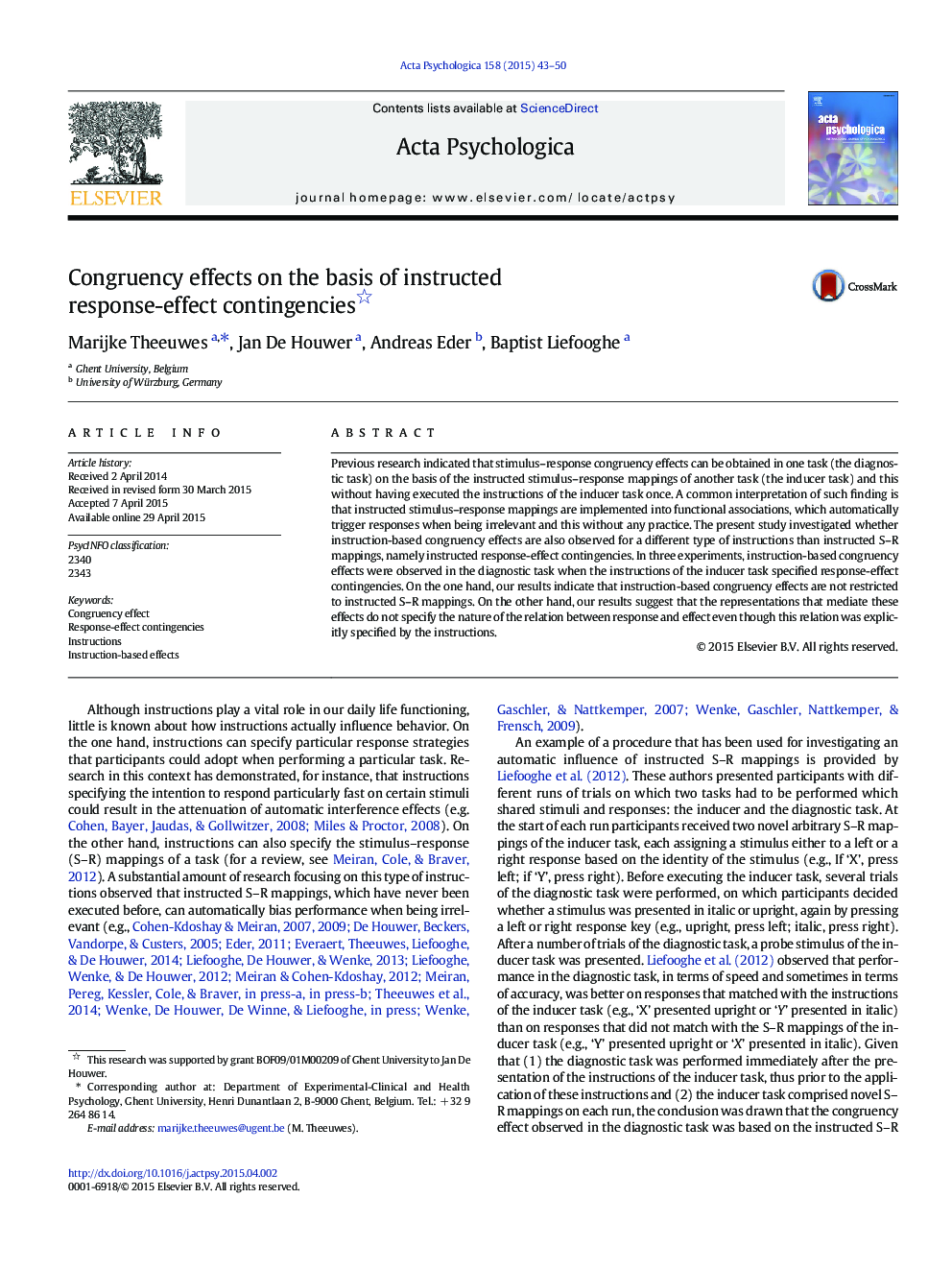| Article ID | Journal | Published Year | Pages | File Type |
|---|---|---|---|---|
| 919702 | Acta Psychologica | 2015 | 8 Pages |
•We report three studies with an instruction based response-effect congruency effect.•Instruction-based congruency effects are not restricted to instructed S–R mappings.•The mediating representations do not specify the relation between response and effect.
Previous research indicated that stimulus–response congruency effects can be obtained in one task (the diagnostic task) on the basis of the instructed stimulus–response mappings of another task (the inducer task) and this without having executed the instructions of the inducer task once. A common interpretation of such finding is that instructed stimulus–response mappings are implemented into functional associations, which automatically trigger responses when being irrelevant and this without any practice. The present study investigated whether instruction-based congruency effects are also observed for a different type of instructions than instructed S–R mappings, namely instructed response-effect contingencies. In three experiments, instruction-based congruency effects were observed in the diagnostic task when the instructions of the inducer task specified response-effect contingencies. On the one hand, our results indicate that instruction-based congruency effects are not restricted to instructed S–R mappings. On the other hand, our results suggest that the representations that mediate these effects do not specify the nature of the relation between response and effect even though this relation was explicitly specified by the instructions.
